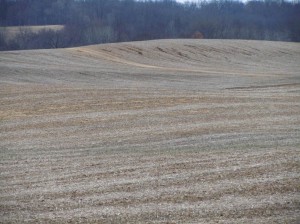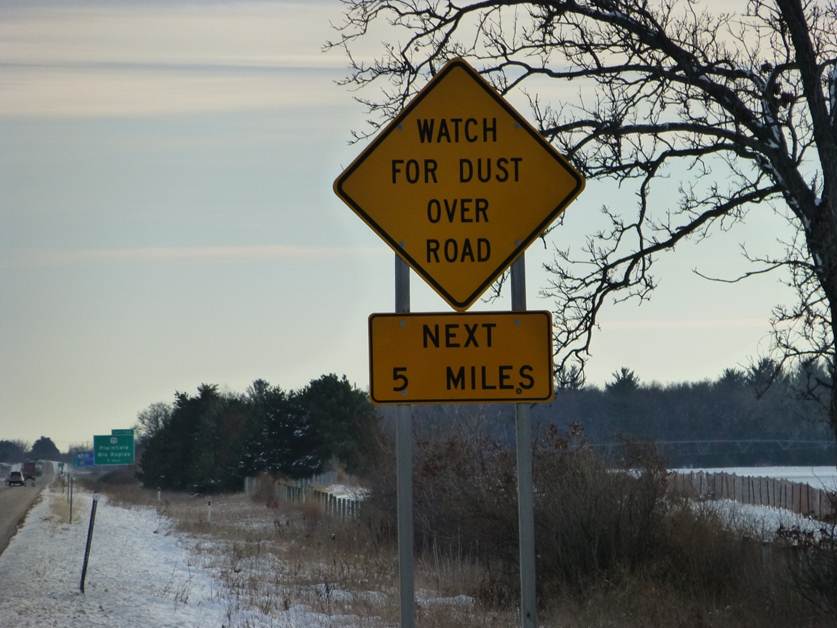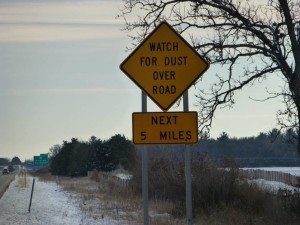Cover Crops Improve Driving Conditions
- This is one of the signs in the Central Sands of Wisconsin that got my attention
Central Sands of Wisconsin
I like to look to the right and left (in addition to out my windshield) when I am driving. My dad taught me that was a very good way to get educated while driving.
So, when I was driving down I-39 in the Central Sands Region of Wisconsin I noticed the sign shown above. There were actually two signs that said “next 5 miles” on them so that equaled 10 miles of warning to motorists to watch for “dust” (translated soil) across both northbound and southbound I-39 over a 10 mile stretch!
And that is exceptionally valuable soil to be losing across the Interstate! The Central Sands Region is a very rich agricultural region and losing soil should not be the “normal” way. The good news is that many acres in the region are covered with cover crops. The bad news is that they still need signs like the one above.

SW Lower Michigan (and in your neighborhood too)
How much does a bulldozer cost to fix erosion ruts in fields? Probably more than cover crop seed. Probably a lot more.
As I drive across the Midwest, this type of erosion is very common. On our hills at home we had erosion like this a few years, even after we started no-tilling.
But is this acceptable? Should it be?
In eastern Iowa along I-80 I saw ruts that had to be almost 4 foot deep! Some of the ruts were not repaired and the farmers changed the direction they planted the fields by the way the ruts ran. And let’s not get me started on fall tilling hillsides with fairly steep slopes!
Cover Crops provide the opportunity to greatly reduce soil erosion. Watch for future posts showing the results of a rainfall simulator on very level soil and how cover crops reduced erosion to a miniscule amount compared to the same area without cover crops.

